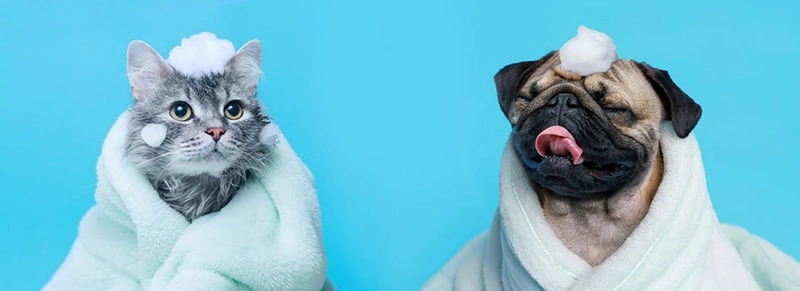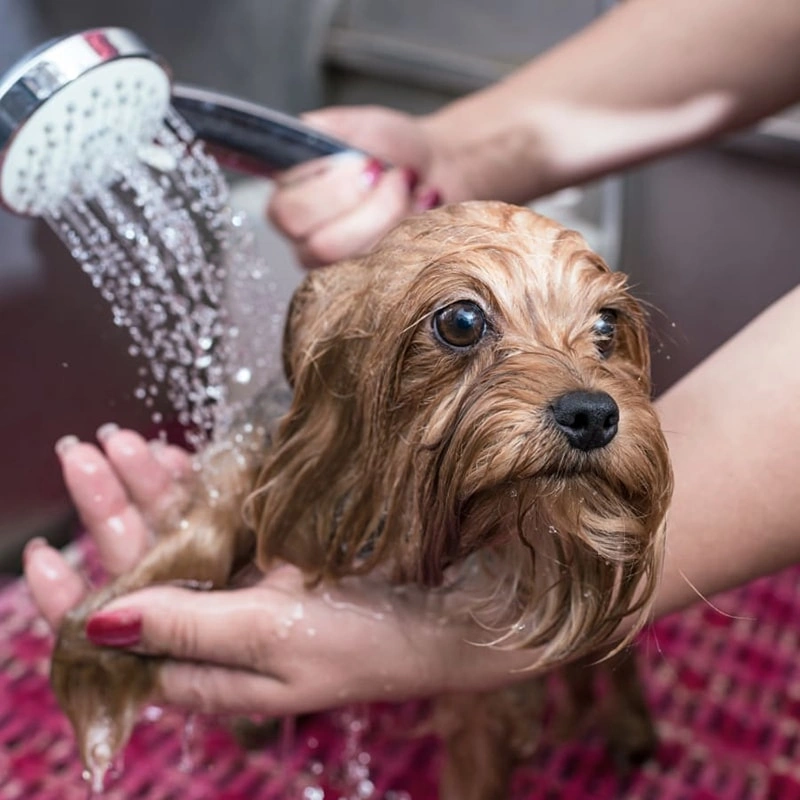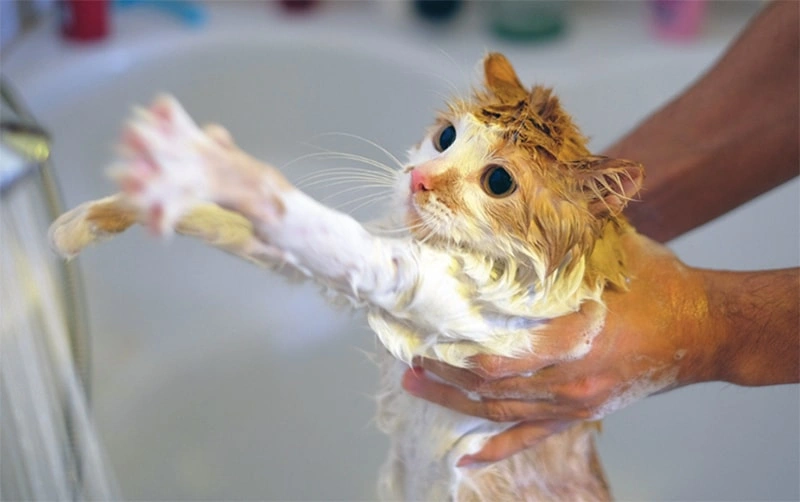Stop guessing! Learn the key factors—coat type, skin condition, and lifestyle—that determine the ideal bathing frequency for your dog and cat, according to veterinary guidance.

The phrase "when in doubt, bathe" can actually do more harm than good for your pet’s skin health. While a clean pet is a pleasant pet, over-bathing can strip essential natural oils, leading to dry skin, irritation, and a dull coat. Under-bathing, conversely, can lead to matting, odor, and skin infections.
So, how often is just right? The answer lies in considering four key variables for your individual pet.
For most healthy dogs, a general recommendation is once every 4 to 12 weeks. However, you should never set a fixed schedule without considering the following factors.

1. Coat Type and Length (The Genetic Factor)
Different coats require vastly different maintenance schedules.
● Long-Haired / Curly Coats (e.g., Poodles, Collies, Maltese): These breeds are prone to matting and should generally be bathed more frequently—every 4 to 6 weeks—with consistent brushing in between.
● Short-Haired / Smooth Coats (e.g., Beagles, Labradors): These low-maintenance coats have excellent natural oil distribution and often only require bathing every 2 to 3 months, or simply when they get noticeably dirty.
● Oily Coats (e.g., Cocker Spaniels, Basset Hounds): Breeds that naturally produce more sebum may benefit from more frequent washing—sometimes every 1 to 2 weeks—to prevent oil buildup and odor.
● Hairless Breeds (e.g., Chinese Crested, Xoloitzcuintli): Lacking a protective coat, their skin is exposed and can accumulate dirt and oils quickly. They often need bathing as frequently as once a week.
● Double-Coated Breeds (e.g., Huskies, Golden Retrievers): These dogs shed regularly, which naturally removes dead skin cells. Over-bathing can damage their protective undercoat, so aim for every 6 to 12 weeks, focusing heavily on de-shedding and brushing in between.
2. Activity Level and Environment (The Lifestyle Factor)
Your dog's daily routine is a major determinant of their bathing needs.
● Outdoor Enthusiasts: Dogs who swim regularly, roll in mud, or spend long hours in nature will naturally require baths more often—sometimes weekly during peak outdoor seasons—to remove debris, mud, and environmental allergens.
● Indoor "Couch Potatoes": A mostly indoor, sedentary dog that is primarily clean may only need a bath when they start to smell or shed heavily, potentially only a few times a year.
● Human Allergies: If a family member suffers from pet dander allergies, a weekly bath with an appropriate shampoo can help manage dander levels and reduce allergens in the home.

3. Skin and Health Conditions (The Medical Factor)
This is the one factor that overrides all others and requires veterinary guidance.
● Medicated Shampoos: Dogs with allergies, bacterial infections, or skin disorders like seborrhea may be prescribed medicated shampoos. These treatments often require bathing at a precise, higher frequency, such as twice a week, as directed by your veterinarian.
● Puppies: For the first few months, puppies should only be bathed when necessary (e.g., after an accident), as their skin is sensitive.

Cats are renowned for their fastidious self-grooming. The barbs on their tongues distribute natural oils and keep their coats remarkably clean, meaning most healthy adult cats rarely need a bath.
However, there are important exceptions where a bath becomes necessary for their health and comfort.
When a Cat Absolutely Needs a Bath:
● Contamination: If your cat has gotten into something toxic, sticky, or noxious (like paint, motor oil, or skunk spray) that they cannot safely lick off, a bath is mandatory for safety.
● Obesity or Arthritis: Cats who are overweight or elderly and suffer from mobility issues often cannot reach their entire body for proper grooming. These cats benefit from bathing once every 4 to 6 weeks to prevent matting and manage odor.
● Long-Haired Breeds (e.g., Persians, Maine Coons): Despite diligent grooming, these cats are highly susceptible to mats (knots). A bath every 4 to 6 weeks, coupled with daily brushing, is often recommended to maintain their coat health.
● Hairless Breeds (e.g., Sphynx): Like hairless dogs, these cats produce oils that collect on their skin and can stain furniture. They typically require a wipe-down or bath once a week to remove this oily residue.
Veterinary Tip: Never use dog shampoo on a cat, as the ingredients (especially certain essential oils) can be toxic to felines. Always use a vet-approved, cat-specific shampoo.

Rather than looking at the calendar, look at your pet. Here are the clear signs it’s time for a wash:
1.The Sniff Test: Your pet has an obvious, lingering odor that doesn't dissipate with brushing.
2.Visible Dirt: They have visible mud, sticky residue, or debris matted into their fur.
Matted Fur: For long-haired pets, small mats that cannot be easily brushed out are a sign that the coat needs a deep clean before the matting worsens.
When in doubt about your pet's specific needs, always consult your veterinarian or a professional groomer who can provide tailored advice based on their breed, age, and health history.